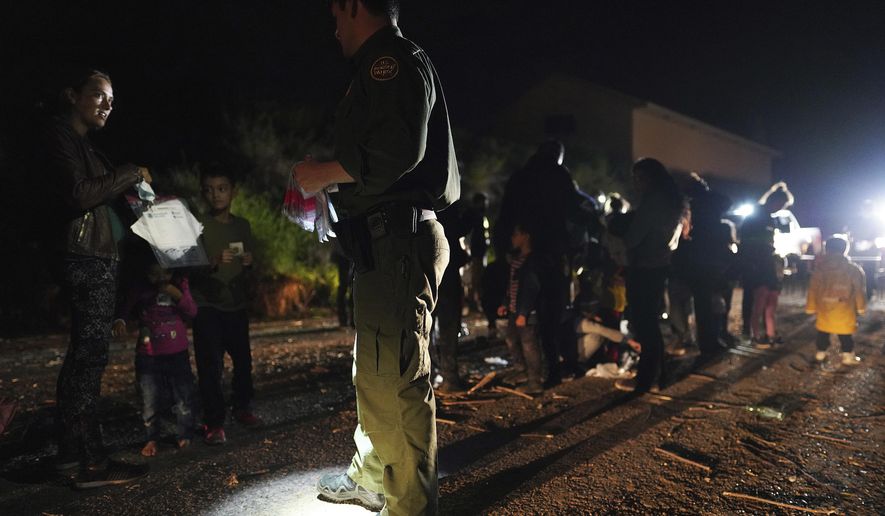Sanctuary jurisdictions are exploding across America and Virginia has emerged as one of the leading states, according to a new watchdog report Wednesday.
Nearly every jail in Virginia now limits cooperation with deportation authorities at U.S. Immigration and Customs Enforcement, according to the Center for Immigration Studies.
North Dakota, Nebraska, New York and Minnesota have also seen significant rises in the number of jurisdictions the center labels as sanctuaries, based on new data from ICE.
All told, the center added 170 new jurisdictions to its sanctuary map, with major spikes in the summer and fall of 2021 and the summer and fall of 2023.
Jessica Vaughan, who wrote the report for the center, said the new Virginia jurisdictions were particularly “bewildering” given the state’s current Republican governor and attorney general.
“It is alarming to see the continued proliferation of sanctuary policies, especially in places like Virginia, where ICE has had to use its scarce resources to re-arrest violent gang members and rapists in our communities who were set free by local jails, when they should have been transferred directly to ICE custody for a plane ride home,” Ms. Vaughan said.
Sanctuary cities are among the most contentious parts of the immigration debate.
Often called “welcoming city” policies, backers say they prevent local authorities from being dragged into federal immigration enforcement responsibilities. One benefit, they say, is that community members — particularly immigrants — are more likely to cooperate with police in reporting crimes or serving as witnesses if they don’t fear deportation consequences.
Sanctuary opponents, though, said the result is that criminals are being let back into communities instead of ousted from the country.
Sanctuary policies range from strict ones that limit any communication or assistance to more flexible policies that may prohibit holding an illegal immigrant for pickup but allow notification so ICE can get someone at release time.
Ms. Vaughan has been building her sanctuary map for nearly a decade, based largely on open-records requests and media reports. The new update uses ICE’s internal report tracking of what the agency labels “limited and non-cooperative institutions.” That data was current as of June.
Among the cases Ms. Vaughan highlighted was a Guatemalan man arrested in Chelsea, Massachusetts, last year for a fourth drunken driving offense and driving without a license. He’d been deported before and had nine convictions, including for drug and drunken-driving crimes. The Suffolk County jail released him last month, defying an ICE cooperation request.
Ms. Vaughan also pointed to Fairfax County in Virginia, where the jail has repeatedly released illegal immigrants accused of having sex with young teenage girls. One Honduran man was arrested for a child sex crime last summer, was released by the county then picked up earlier this year on four more child sex crime counts, Ms. Vaughan said.
“There have been some extremely dangerous deportable criminal aliens who have been released by jails who could have been turned over to ICE, who have created danger in Virginia communities,” she said.
Kathryn Ann Duffy Pavluchuk, the general counsel for the sheriff’s office, defended the county’s policy in an email to The Washington Times earlier this year, saying it is “designed to account for both public safety and equal treatment for all under the law.”
She said ICE had been abusing the detainer process by asking the county to hold targets for 48 hours beyond their normal release point and then not showing up within that window.
Ms. Pavluchuk said if ICE wants cooperation now it must get a judicial warrant.
“Had they done so ICE would have been notified and the inmate would have been held. ICE continually declines to do so,” she said.
ICE officials, though, say no such judicial warrant exists in the immigration system, which is generally a civil matter and the penalty is deportation, not incarceration. ICE instead relies on a type of administrative warrant that sanctuaries refuse to recognize.
Some jurisdictions are bucking the sanctuary trend — albeit under pressure.
In Indiana, Attorney General Todd Rokita sued East Chicago over its sanctuary policy, arguing it conflicted with an anti-sanctuary state law. City officials repealed their ordinance late last month.
In the repeal legislation, the city said it had concluded the sanctuary policy “is not effective or necessary for the protection of the rights of residents and visitors.”
Mr. Rokita has also threatened a lawsuit against Gary, Indiana, which caved last week and repealed its own “welcoming city” ordinance.
Gary’s law had prevented local authorities from telling ICE when it released deportation targets.
Ms. Vaughan said other states should look at their anti-sanctuary laws and see if they can be used against recalcitrant jurisdictions.
She said South Carolina, Georgia, Idaho, Kansas, North Carolina and North Dakota all have anti-sanctuary laws but had new sanctuaries added to her map in this update.
• Stephen Dinan can be reached at sdinan@washingtontimes.com.




Please read our comment policy before commenting.